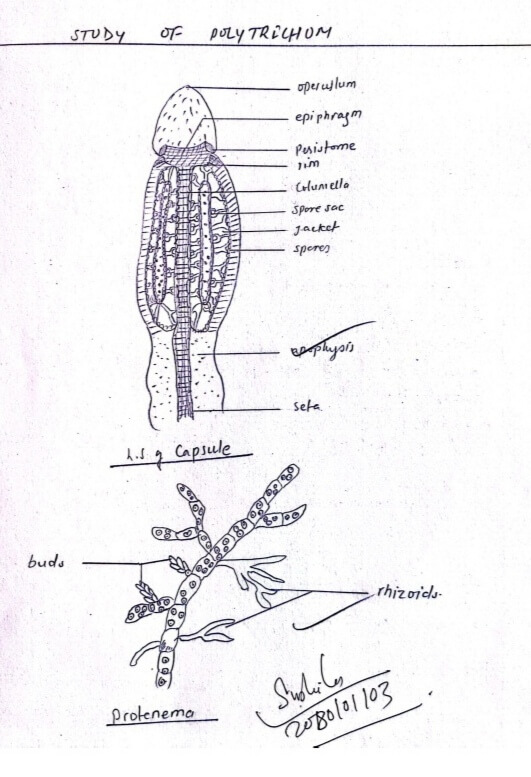COMMENTS ON POLYTRICHUM
Habit
Polytrichum is a temperate, cosmopolitan, perennial, shade loving non growing mostly on hilly rocks, damp marshy soil on the bank of pools, streams and on woods.
Vegetative structure
Gametophytic plant:-
It is few centimeters in height and well differentiated into underground rhizome, erect aerial stem, root and leaves.
Rhizoids:- They arise from the lateral sides of rhizomes as a numerous long soft twisted man. They have thick-walled cells with oblique septa and help in fixation and vegetative reproduction.
Stem and leaves:- The erect short stark arise from rhizomes behave as stem, stem is covered with scale leaves and further upside lanceolate leaves are present.
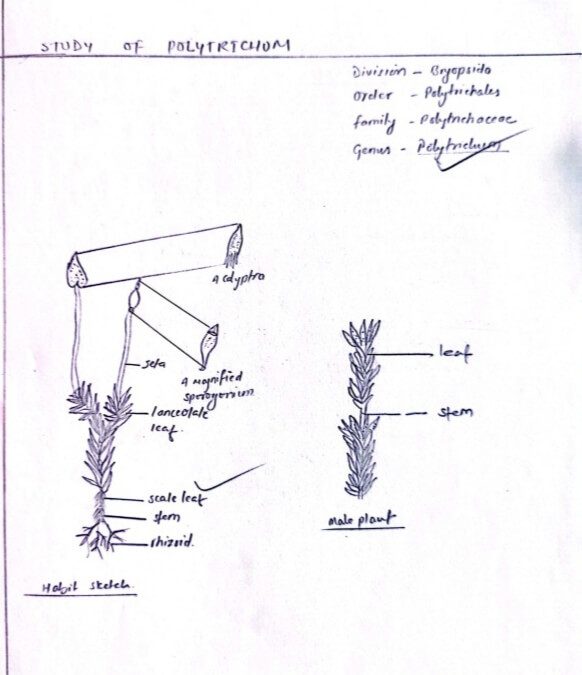
Internal structure of stem
The. T.s. of stem, irregularly waxy in outline, shows the following tissues.
i) Epidermis:
It is the outermost single celled superficial layer.
ii) Cortex:
A thick region divisible into a few thick walled hypodermal outer cortex followed by thick layers of thin walled cells of the inner cortex enclosing numbers of leaf trace bundles here and there.
iii) Leptone:
The innermost cortical layer with square tube-like leptoid cells, interspersed with starch containing leptoid mantle.
iv) Hydrom and amylin sheath:
Inner to leptone is a single thick walled starch containing a cell layer called hydrom sheath.
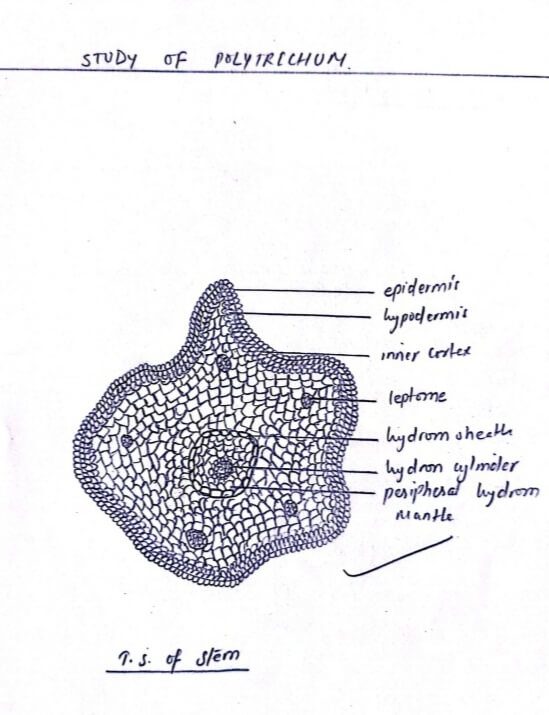
Internal structure of leaf
i) Epidermis:
The lower surface is well Marked with epidermal cells composed of a large one-celled layer whose outer wall is thickened.
ii) Cortex:
It is represented by 1.2 thin walled sclerenchyma cells.
iii) Lamellae:
The last layer of parenchymatous cells give rise to many vertical columns composed of 5-8 chloroplast bearing cells arranged parallel to each other.
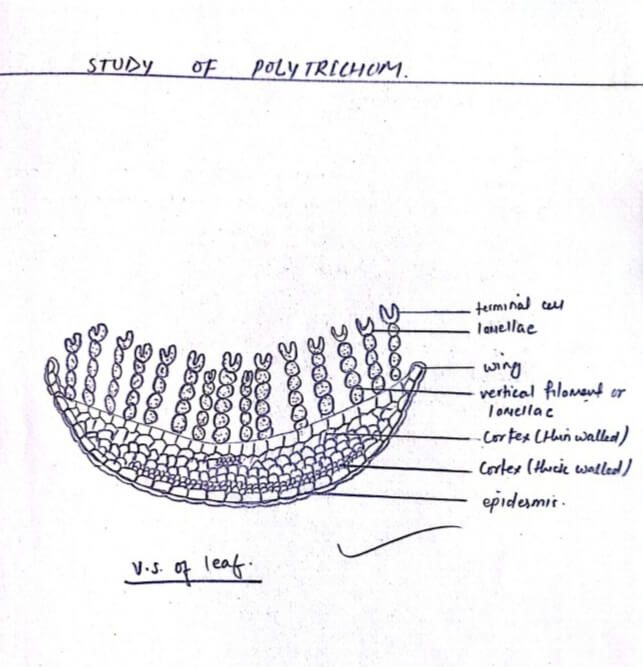
Sexual reproductive structures
i) Antheridia:
They are borne in dusters within the involucre of leaves in the form of a compound head of male plant. The head contains a number of antheridia of different sizes along with a number of sterile paraphyses filaments. Each antheridium contains a club-shaped body standing on a stalk. The body is surrounded by a jacket layer enclosed with numerous androcytes.
ii) Archegenio:
They arise as archegonial heads within the involucre of leaves at the apex of the female plant. The head usually contains archegonia with three layered stalks. Each archegonium consists of a swollen venter and a long neck. Then the venter bears an egg with a venter conal cell above it. The neck contains 6-9 neck canal cells.
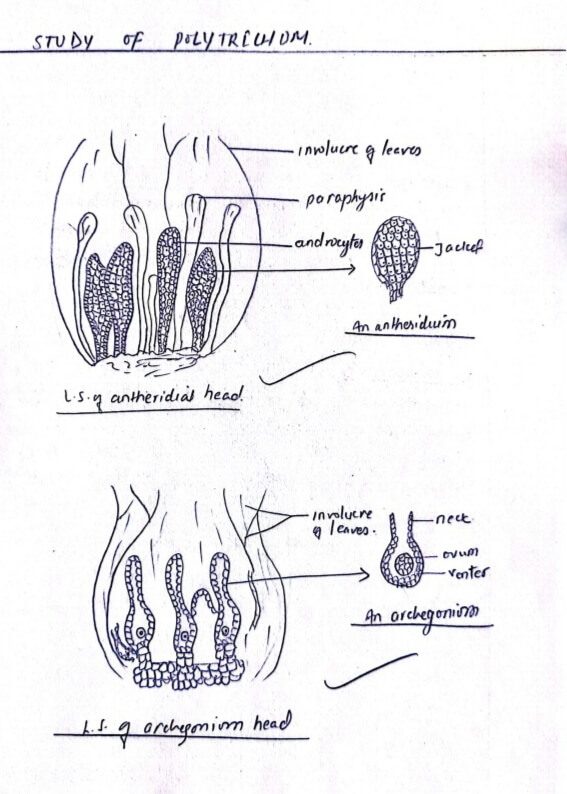
iii) Capsule:
It is the main elongated angular spore bearing organ of anatomical interest.
a) Operculum:- It is the conical shaped lid of a capsule situated at the top of it.
b) Peristome:- It is a ring attached to epiphysis and consisting of 32-64 short stout teeth.
c) Capsular wall:– It is the covering of a capsule composed of multilayered chlorophyllous cells.
d) Columella:- It is the central column composed of mutilated colluminal cells.
e)Spore-sac:- A spouse of sporogenous cells lies in the space between wall and Columella.
f) Airspaces:- The spore sac is separated from the capsular wall and Columella by outer air space.
iv) Prolenema
A protonema is a thread-like chain of Cells that forms the earliest stage of development of gametophyte in the life cycle of Mosses.
